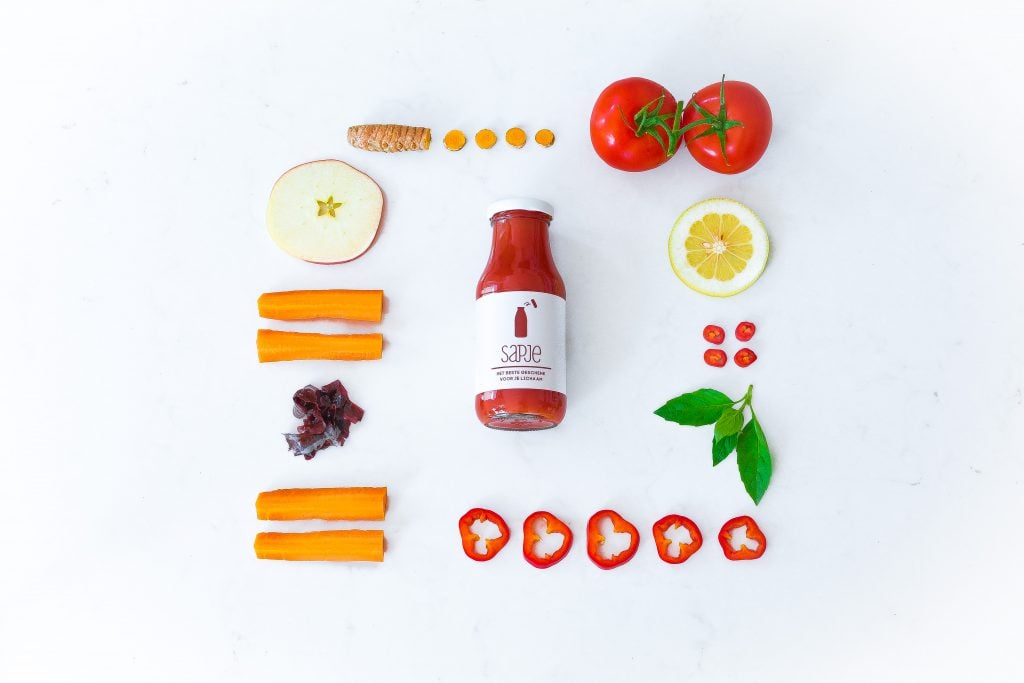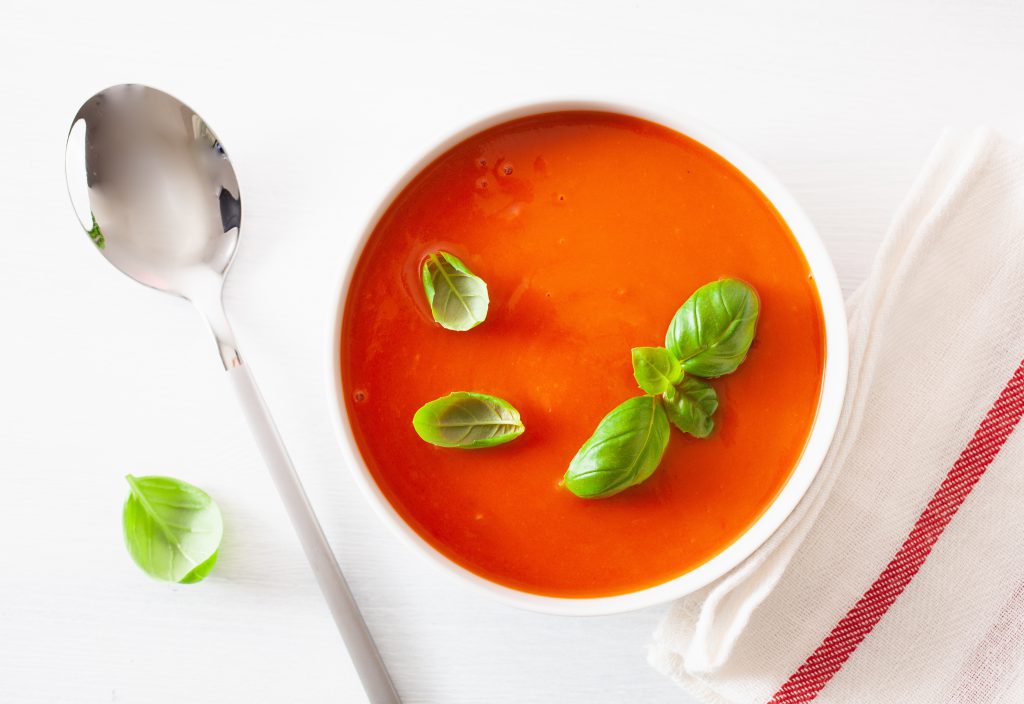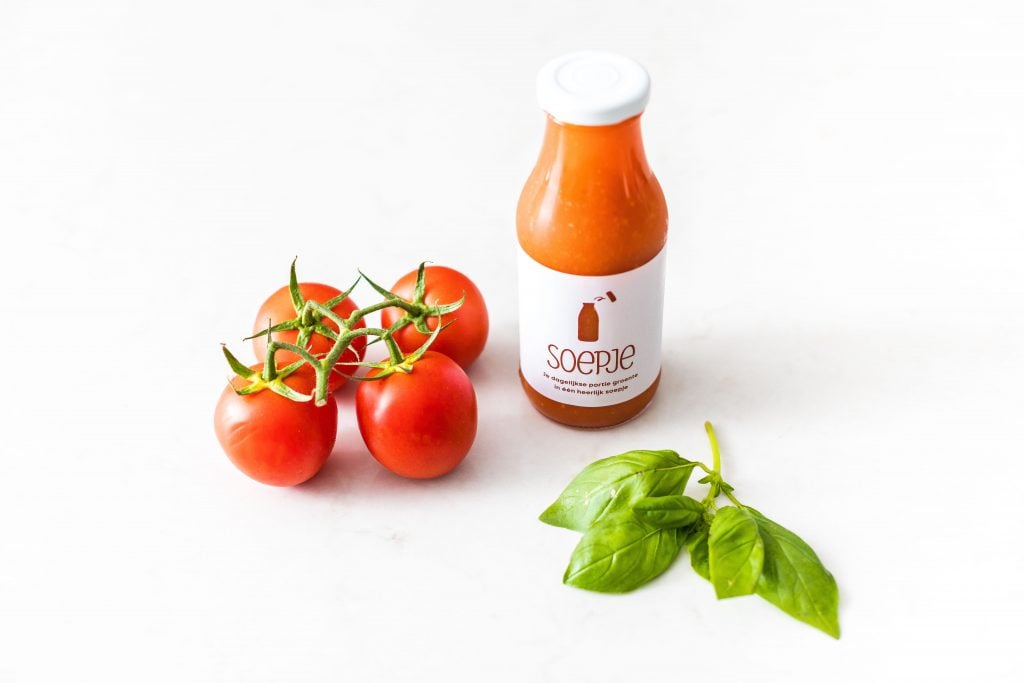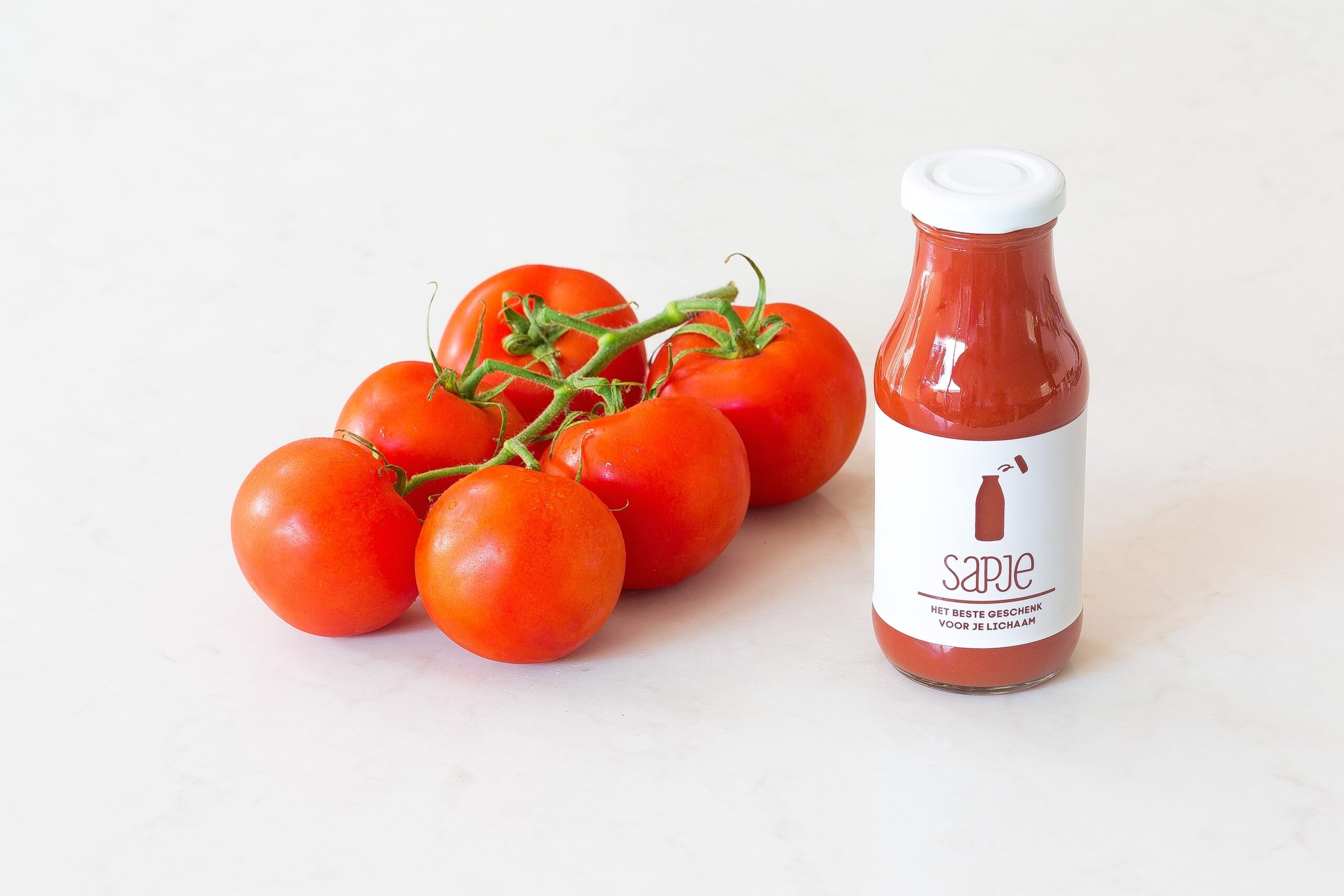Drinking tomato juice is a great way to support your health. Packed with vitamins, minerals, and antioxidants, it offers numerous benefits. Let’s delve into the details!
Why is Tomato Juice Healthy?
Tomato juice is a timeless classic in the realm of beverages. It is said to have been first created in the United States back in 1917, gaining popularity rapidly. While it’s a key ingredient in a robust Bloody Mary cocktail, tomato juice can also be enjoyed on its own for a refreshing boost. When you consume fresh, organic tomato juice, you’re giving your body a generous supply of vitamins, minerals, and antioxidants. Additionally, tomatoes are low in calories, and pure tomato juice contains no added sugars. These factors contribute to the overall healthfulness of tomato juice. Read on to discover:
- Why fresh-pressed tomato juice is preferable to packaged tomato juice
- The vitamins and minerals that make tomato juice so healthy
- The importance of the compound lycopene found in tomato juice
- How tomato juice fits into a health-conscious lifestyle
- A delightful recipe for making your own tomato juice
How Healthy is Tomato Juice?
The healthiness of tomato juice depends on its ingredients and processing. Ideally, opt for tomato juice that contains only the juice of fresh, ripe, raw tomatoes without any added salt, sugar, or preservatives. Freshly squeezed tomato juice is likely to be richest in nutrients, so packaged options might not provide the same health benefits. Packaged tomato juice often uses concentrates, which are essentially tomato paste diluted with water and may not be as fresh.
Fresh Pressed Tomato Juice
Fresh, organic, self-pressed tomato juice is exceptionally healthy. You’ll find a delicious recipe for making your own tomato juice at the end of this article. If making it yourself is not an option, you can also buy it. The best choice is organic tomato juice that has been naturally preserved to retain nutrients—perhaps by freezing the juice. At Sapje, we opt for freezing all our juices, including our tomato juice and tomato soup, to preserve their quality. Continue reading to discover the potential health benefits of high-quality tomato juice!

Nutrients in Tomato Juice
In the ideal scenario, your fresh tomato juice contains nothing but the juice of tomatoes (although our recipe includes other healthy ingredients, they only enhance the goodness of the tomatoes). Let’s delve deeper into the nutritional profile of tomatoes to truly understand their healthfulness. According to the US Department of Agriculture (USDA), an average-sized ripe tomato contains approximately:
- 22 calories
- 4.8 grams of carbohydrates
- 1.1 grams of protein
- 0.2 grams of fat
- 1.5 grams of fiber
- 3.2 grams of sugars
Tomatoes are low in calories but rich in vitamins and minerals. Here’s a breakdown of the healthy nutrients found in tomato juice and their benefits:
Vitamins and Minerals in Tomato Juice
According to the aforementioned source, an average-sized ripe tomato contains about:
- 16.9 milligrams of vitamin C (beneficial for the immune system, skin, and protection against free radicals)
- 51.7 international units of vitamin A (supports eyesight, skin, and immunity)
- 9.7 micrograms of vitamin K (promotes healthy blood clotting and strong bones)
- 292 milligrams of potassium (beneficial for muscles, nervous system, and blood pressure)
- 0.1 milligrams of vitamin B6 (contributes to energy levels)
- 18.4 milligrams of folate (supports red blood cell production)
Additionally, tomatoes contain smaller amounts of the following nutrients:
- Vitamin E (helps protect against free radicals)
- Calcium (good for bones, teeth, and muscles)
- Iron (supports immunity, energy levels, and mental clarity)
- Magnesium (beneficial for concentration and bones)
- Phosphorus (promotes energy metabolism)
- Zinc (beneficial for concentration, skin, hair, nails, and immunity)
- Copper (contributes to a healthy immune system and nervous system)
- Niacin (vitamin B3, supports energy production)
- Pantothenic acid (vitamin B5, also supports energy production)
- Choline
- Betaine
- Lycopene
An average glass of tomato juice often contains the juice of around 2 medium-sized tomatoes, providing you with a double dose of these healthy nutrients!
Lycopene and Antioxidants in Tomato Juice
Tomato juice is a rich source of antioxidants, including vitamin E. These antioxidants assist your body in neutralizing free radicals, protecting your healthy cells and tissues from oxidative damage. Tomatoes are especially known for their high content of lycopene, a carotenoid responsible for their red color. Lycopene is unique to plants and is often added to products as a natural coloring agent. Other carotenoids found in tomatoes include beta-carotene, gamma-carotene, and various other forms.
Lycopene in Raw and Cooked Tomatoes
Research suggests that heating tomatoes makes the lycopene they contain even more absorbable by the body (3). This effect is enhanced when tomatoes are cooked with fats like olive oil. So, if you want to fully benefit from lycopene, consider making a delicious tomato soup with a dash of olive oil!
However, heating might not be as beneficial for other nutrients, such as vitamins and minerals. If you want to enjoy all the other beneficial compounds in tomato juice, opt for its fresh, unprocessed form. Alternatively, you can have the best of both worlds by alternating between raw tomato juice and cooked tomato soup. Thankfully, our recipe for “gazpacho” tomato juice/tomato soup at the end of this article is delicious and nutritious, whether served cold or warm!

Other Health Benefits of Tomato Juice
Regularly consuming tomato juice can also be beneficial for the functioning of the blood vessels. Tomato juice has a high vitamin C content, which contributes to the formation of collagen, which is important for the beneficial functioning of the blood vessel. Additionally, tomato juice is rich in potassium, a mineral that supports healthy blood pressure.
Adding organic tomato juice to your diet can also support your muscles and bones. Due to its calcium content, tomato juice helps maintain strong bones and plays a role in maintaining strong muscles. A study found that tomato juice is a healthy choice for overweight individuals. (4) This is not only due to the nutritious components but also because it contains low sugars (and overall calories).
The Sugar Content of Tomato Juice
As you might know, botanically speaking, tomatoes are not vegetables but fruits, as they have seeds and are produced by flowering plants. Tomatoes are actually categorized as berries. Hence, while commonly considered a vegetable, tomato juice is technically a fruit juice.
While fruit juices can be rich in vitamins and minerals, they often contain a significant amount of fructose, or fruit sugars. This is why at Sapje, we focus on producing organic vegetable juices, which offer just as many beneficial nutrients while being gentler on teeth and energy levels. However, for tomato juice, we make an exception. Compared to other fruit juices, tomato juice is relatively low in fructose. Compare the sugar content per 200 ml glass for these well-known fruit juices:
- Apple juice: 92 calories, 21 grams of sugars
- Grape juice: 130 calories, 32 grams of sugars
- Orange juice: approximately 80 calories (packaged: 19 grams, fresh: 17 grams of sugars)
- Tomato juice: approximately 32 calories, 6.2 grams of sugars. (5)
Are There Downsides to Tomato Juice?
Tomatoes are the fruits of the tomato plant (Solanum lycopersicum), a member of the nightshade family (Solanacaea), along with potatoes, bell peppers, and eggplants. Some people might experience allergic or hypersensitive reactions after consuming foods from this plant family. If you’re part of this group, it’s advisable to avoid (excessive) consumption of tomato juice.
Making Your Own Tomato Juice: A Tasty and Healthy Slow Juice Recipe
‘Gazpacho’ Tomato Juice/Soup
Ingredients per serving:
- 2 tomatoes
- 1 stalk of celery
- 1 orange carrot
- Red bell pepper
- Cucumber
- 4 basil leaves
- Garlic clove
Preparation:
- Juice the tomatoes using a slow juicer.
- Juice the celery stalk, excluding the leaves.
- Trim the ends of the carrot, cut into small pieces, and juice.
- Remove the seeds from the bell pepper and juice.
- Juice the cucumber with its skin.
- Juice the basil leaves, including the stems.
- Peel the outer skin of the garlic clove and juice.
- Optionally, add a dash of olive oil.
- Consume as soon as possible.
- (Or heat it up for more lycopene absorption)

Prefer Buying Tomato Juice or Tomato Soup?
If making fresh tomato juice or tomato soup from scratch is not feasible, consider the convenience of ordering our organic tomato juice made from the finest local, seasonal ingredients. Hand-pressed using a slow juicer, our tomato juice maximizes flavor and nutrient retention. Our organic tomato soup is cooked and then rapidly frozen using a shock freezer for natural preservation, eliminating the need for other preservatives. When you place an order, you can choose where and when to have the juices or soups delivered. All you need to do is thaw them to enjoy the benefits of fresh tomato juice and soup for your health!
Sources:
FoodData Central. (n.d.). https://fdc.nal.usda.gov/fdc-app.html#/food-details/170457/nutrients
Ghavipour, M., Sotoudeh, G., & Ghorbani, M. (2015). Tomato juice consumption improves blood antioxidative biomarkers in overweight and obese females. Clinical Nutrition, 34(5), 805–809. https://doi.org/10.1016/j.clnu.2014.10.012
Giovannucci, E. (2002). A Review of Epidemiologic Studies of Tomatoes, Lycopene, and Prostate Cancer. Experimental Biology and Medicine, 227(10), 852–859. https://doi.org/10.1177/153537020222701003
Het Diabetes Fonds. (n.d.). Hoeveel suiker zit er in vruchtensap? https://www.diabetesfonds.nl/over-eten/hoeveel-suiker-zit-er-in/hoeveel-suiker-zit-er-in-vruchtensap
Voedingscentrum. (n.d.). Pagina helaas niet gevonden. https://www.voedingscentrum.nl/nl/404.aspx?requestedpath=/encyclopedie/lycopeen.aspx
Can I drink tomato juice while I’m trying to lose weight?
What vitamins and minerals are in tomato juice?
What are other health benefits of tomato juice?
How do I make healthy tomato juice myself?
Please note that the tomato juice is made using our recipe with a slow juicer. We use this appliance because it preserves more vitamins and minerals in your (tomato) juice.
Don’t have a slow juicer? No problem! You can also use an immersion blender or regular blender.

